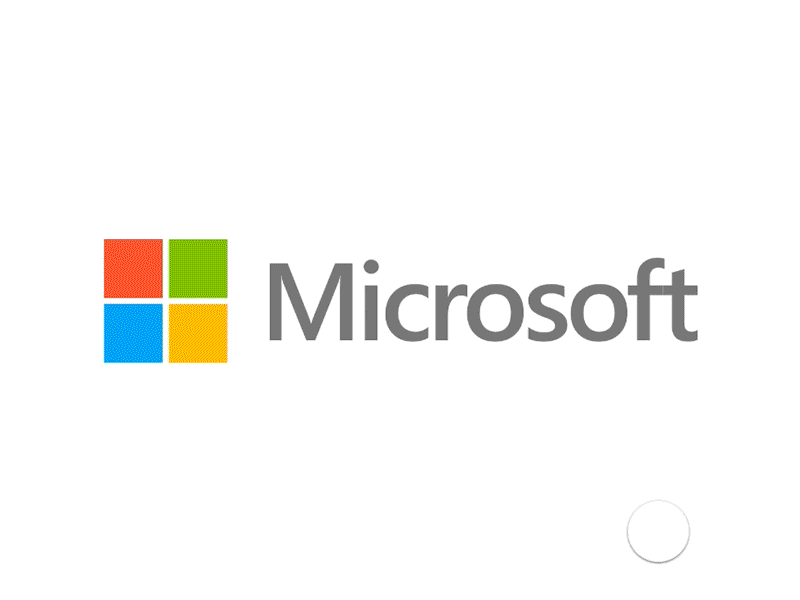Non-conventional trademarks, also widely referred to as non-traditional trademarks, are a new type of trademarks, which don't fall into the category of pre-existing conventional trademarks. These trademarks often face difficulties in getting registered; nevertheless, they must fulfill all the essential requirements of uniquely identifying the commercial origin of services or products.
The term 'non-conventional trademarks' is broadly inclusive as it consists of the marks, which don't belong to the conventional set of marks - for instance, those comprising numerals, symbols, logos, letters, words, pictures or combinations of these elements - and therefore consists of marks based on shape, color, appearance, smell, sound, texture, and taste.
A non-conventional trademark must possess the communicative ability to differentiate the products and services of one company or individual from those of others. It can either be a visible sign like shape, color, moving image, position, and hologram or a non-visible sign like texture, taste, sound, and scent.

Sound Trademark
A sound trademark is the one where a sound or musical notation performs the function of a trademark, i.e., uniquely identifying the commercial origin of services or products. Over the past few years, sounds have been increasingly used by companies as trademarks in the market; however, it has traditionally been arduous to protect sounds as trademarks through trademark registration as a sound wasn't considered capable of obtaining trademark protection. The issue was then taken into consideration by WTO in the Agreement on Trade-Related Aspects of Intellectual Property Rights (TRIPS). The agreement has widened the legal definition of a trademark to include any sign that distinguishes the goods and services of one company or individual from another.
Despite the recognition, which must be granted to the sound trademarks, the graphical representation of such marks can indeed sometimes create an issue for the trademark applicants who are looking forward to protecting their proposed trademarks. In this scenario, different countries have different ways of dealing with the issue; for instance, in Australia, sound trademarks are in general acceptable if they can be represented well by musical notations.
Some widely-known examples of registered sound trademarks include Audi 'heartbeat' sound logo, 'Intel Inside' musical jingle, Samsung ringtone, Renault 'Passion for life,' Nissan 'Innovation that excites' sonic logo, Netlfix sound logo, Nokia tune, BMW sound logos, and so on.
*Click on the above examples to have a real-time experience.

Motion Trademark
The increasing market competition and the widespread use of digital marketplace have paved the way for motion trademarks, which consist of an innovative and unique animation created with the help of a computer program or some other moving object existing in the real world. Without any second thoughts, a motion trademark should fulfill the requirement of 'distinctiveness' and be depicted precisely in the trademark application. The series of movements or succession of images in the proposed motion trademark is indeed the most crucial aspect, which may subject to its legal protection. While preparing the application for the proposed motion trademark, it is necessary to make sure that the mark is coherent and brief. The concerned authorities in different countries do raise objections if the proposed motion trademark fails to meet the requirement of uniformity.
Some widely-known examples of registered motion trademarks include the zoom-in view of the female statue at the starting of every Columbia Pictures' movie, Microsoft Windows logo appearing while turning on a windows laptop or PC, the lighting effects, which rotate around the microphone of Apple's SIRI personal assistant and knowledge navigator, Nokia phone's opening screen display, Sony Mobile's moving depiction of its circular logo, and so on.
*Place your cursor on the above examples to have a real-time experience.

Scent Trademark
A scent trademark is the one in which the scent associated with a specific product acts as its trademark. A scent trademark is also widely referred to as a smell trademark or an olfactory trademark. The smell is considered to be a potent type of human memory, and businesses nowadays are showing a lot of interest in pairing scents with their products. For obtaining trademark registration of a scent mark, the applicants must represent the product's scent visually and show that it is distinctive from the product itself. The written description of the proposed smell or scent trademark must be so precise such that there isn't any confusion created with the already existing ones.
Some widely-known examples of registered scent trademarks include the Plumeria blossom scented sewing thread and embroidery yarn, Strawberry scented toothbrushes, Minty scented pain-relief medicated patches, Coconut scented retail stores for sandals, flip flops, and accessories, Bubble-gum scented shoes, sandals, flip flops, and accessories, Flowery musk scent for retail stores selling consumer electronics, and so on.

Color Trademark
A color trademark is the one in which there is at least one color used that performs the function of a trademark, i.e., uniquely identifying the commercial origin of goods and services. This category of non-conventional trademarks is different from the conventional (logo or word) trademarks featuring a specific color or combination of colors. Colors and combinations of colors, as part of a product, package, or service, can be registered as a trademark only if they serve a source identification function and not merely a decorative or utilitarian purpose. Color trademarks usually present different legal issues in different jurisdictions; for instance - In India, a color mark can be registered as a trademark only if the customers can link the color directly with the brand.
Some widely-known examples of registered color trademarks include T-Mobile's Magenta, Lilac of Milka-chocolate, Blue of Tiffany and Co., Orange of Fiskars scissors, Orange in Reese's, Brown of United Parcel Service, and so on.

Hologram Trademark
A hologram refers to a cross between what happens when you click a photograph and what happens when you actually look at something for real. To be specific, a hologram is a permanent record of the light reflected off an object; however, it also appears real and three-dimensional, and like a real object, it moves as you look around it. A hologram trademark is the one in which a hologram serves the purpose of a trademark, that is, uniquely identifying the commercial origin of goods and services. What turns as an obstacle in the trademark registration of a hologram mark is the difficulty faced to prove it as the source identifier of the product. Applicants who are looking forward to filing a trademark application for a hologram mark must satisfy the usual elements required for a trademark and also describe every view formed on the hologram when it is moved.
Some widely-known examples of registered hologram trademarks include the Glaxo Group's hologram trademark registrations that appear on their packaging of goods like toothpaste, dental floss, and mouth wash, American Express' hologram trademark in the United States for the surface of its credit card, and so on.

Shape Trademark
A shape trademark protects the shape of core products. By getting a shape trademark registered, brands and businesses can protect the ornamental or aesthetic nature of their products. The shape of a product can't obtain trademark protection if it results from the nature of the product itself, or if it gives substantial value to the product, or if it is necessary to obtain a technical result.
Some widely-known examples of registered shape trademarks include the Manolo Blahnik shoe, the Longchamp Le Pilage bag, the shape of the Gorbatschow Wodka bottle, and so on.

3D Trademark
A 3D trademark includes both the shape of the goods and their packaging. The trademark registration of 3D marks for the products is now the ultimate goal of the brand owners out there, as the same has become increasingly complicated with time. A 3D mark can, in general, be protected as a trademark but not if the shape of the product is its essential characteristic of use. The scope of trademark protection of a 3D mark heavily depends on the goods and services for which it is applied; hence, it is imperative to attach an all-inclusive list of the goods and services to the trademark application.
Some widely-known examples of registered 3D trademarks include the packaging of the Ferrero Rocher chocolate, the 4-bar shape of the KitKat chocolate, the packaging of a Toblerone chocolate bar, and so on.

Position Trademark
A position trademark is the one in which a mark is affixed to or placed on a product. It can be represented by an image, which shows how the mark is positioned on the product, along with its size and proportion as compared to the overall product. Like other trademarks out there, a position trademark must own a distinctive character, i.e., allowing the customers to identify the same as coming from a specific brand.
An example of a registered position trademark is the EU trademark no. 13755244, registered on 17th July 2015, which comprises a figurative element placed on the outer surface of a shoe's upper part, further extending lengthwise from the center of the cuff of the shoe down to the sole.

Taste Trademark
A taste trademark is the one in which the taste or the flavor of an item acts as its trademark. Taste marks need to be specified with the help of distinguished written descriptions. The challenge in getting a taste mark registered as a trademark, however, lies in the aspect of functionality. It is still unclear how the taste could function as a source indicator as it typically performs a utilitarian function, and customers usually have no access to the flavor or taste of an item before purchasing it. Therefore, although it is theoretically possible to get a taste trademark registered - in practice, it has been elusive.

Texture Trademark
In the legal terms, the feel of a product or its packaging can act as the source identifier and hence qualify for obtaining trademark protection. In the scenario where the feel or texture is critical to the use or purpose of the product or its packaging or affects the quality or cost, it shall be considered functional and not permitted trademark registration. In addition to satisfying the usual requirements of getting a trademark registered, the applicants for this type of non-conventional trademark need to provide an appropriate representation and description of the texture with the trademark application.
In the present highly competitive business environment, companies and organizations should give due attention to including non-conventional trademarks in their overall IP portfolios by registering them. The advantages of getting such a trademark registered include the ability to restrict or stop your competitors from using a confusingly similar mark, differentiate your product or brand, and have increased notoriety. However, it is equally imperative to consider well all the costs, difficulties, and risks involved in the registration of non-conventional trademarks.
*Please note that all the examples given here are registered Non-Conventional Trademarks. They belong to their rightful trademark owners and have been quoted only for the sole purpose of explanation.












